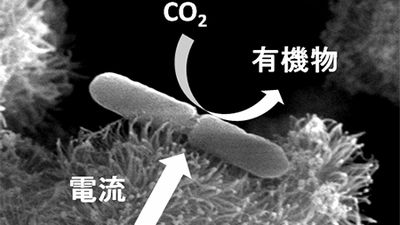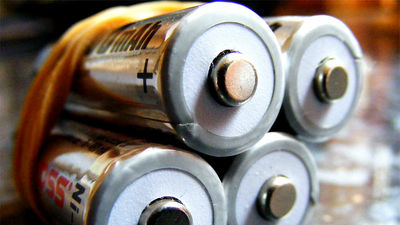'Bacteria that eat metal as an energy source' is accidentally discovered from the flask left after the experiment

Some of the bacteria that live in every part of the earth have a very mysterious ecology, and bacteria that are supposed to perform photosynthesis are
Bacterial chemolithoautotrophy via manganese oxidation | Nature
https://www.nature.com/articles/s41586-020-2468-5
Bacteria with a metal diet discovered in dirty glassware
https://phys.org/news/2020-07-bacteria-metal-diet-dirty-glassware.html
Elusive Metal-Eating Bacteria Predicted Over a Century Ago Discovered in Lab Accident
https://www.sciencealert.com/bacteria-that-eat-the-metal-manganese-was-found-by-accident-in-a-lab

On one occasion, an environmental microbiologist at the California Institute of Technology
Professor Leadbeater, who returned to the lab after a few months, noticed that the manganese carbonate compound that was coding the glass bottle turned from the original cream color to black. It seems that the dark substance was a type of manganese oxide in which manganese carbonate was oxidized, and somehow, while Professor Leadbeater left the glass bottle, somehow the manganese ion lost electrons and was oxidized.
“I thought, “What's this?” at the time,” said Professor Leadbeater, who decided to find out what was driving the oxidation reaction. It seems that scientists have predicted that there may be bacteria that use manganese as an energy source for more than a century, Professor Leadbeater said that the criminal who oxidized the manganese carbonate coating the glass bottle was manganese. He said he thought it was an unknown bacterium that would be used as an energy source.

To find out if the phenomenon was due to a biological process, Professor Leadbeater and postdoc Hang Yu coated many flasks with manganese carbonate and sterilized some of them with hot steam. When the flask was immersed in water and allowed to stand, it was confirmed that the sterilized flask did not discolor, while the manganese carbonate in the non-sterilized flask was oxidized and turned black.
Subsequently, when the research team cultivated bacteria that were present in manganese oxide, about 70 kinds of bacteria were discovered. However, as a result of various tests, it seems that they succeeded in narrowing down to two types of bacteria candidates that oxidized manganese carbonate.
The two species of bacteria were those belonging to the phyla Nitrosubira and the class Betaproteobacteria , respectively. The Beta-Proteobacteria bacterium seems to be unable to oxidize manganese carbonate if it is a single substance, and the research team thinks that the bacteria of the nitrosubila oxidize manganese carbonate alone or both oxidize manganese carbonate jointly.
In addition, the research team conducted an experiment in which manganese carbonate labeled with carbon-13 was given to the cultured bacteria in order to investigate 'why did bacteria oxidize manganese carbonate?' As a result, it was confirmed that the bacteria absorbed manganese carbonate labeled with carbon-13 into the body, and the bacteria used electrons contained in manganese carbonate to convert carbon dioxide into carbon that can be used as an energy source for cells. I understand that.
The mechanism by which inorganic compounds such as manganese are metabolized and converted into energy is called chemical synthesis . Although bacteria that chemically synthesize with other metals were known, this is the first time that a bacterium that chemically synthesizes with manganese was found, and the existence was finally confirmed over a century after the existence was predicted. That's it.

by Hang Yu
Manganese is a substance that is abundant on the earth, and is absorbed by the human body from nuts, tea, and leafy vegetables, and is used as a nutrient related to bone formation. However, while manganese oxide was discovered in many places, it was a mystery about why manganese oxide occurs in various places. Although it was sometimes reported that the water pipe was clogged with manganese oxide, the reason why the trace amount of manganese contained in the tap water was oxidized was not found.
It is known that the closely related species of bacteria discovered this time live in groundwater, and tap water in Pasadena , where the California Institute of Technology is located, was pumped from groundwater. As a result, Professor Leadbeater points out that the bacteria that oxidize manganese that lived in groundwater might have mixed with tap water and produced manganese oxide in the water pipe.
In addition, the research team believes that the same bacteria as the one discovered this time may also be involved in the formation of manganese nodules , which are iron hydroxide and manganese hydroxide condensed in layers in the sea floor. I will. Leadbeater commented, 'It's a great aspect of microorganisms in nature to metabolize seemingly unmetabolizable substances like metals to produce useful energy for cells.'

by Glenn Marsch
Related Posts:







